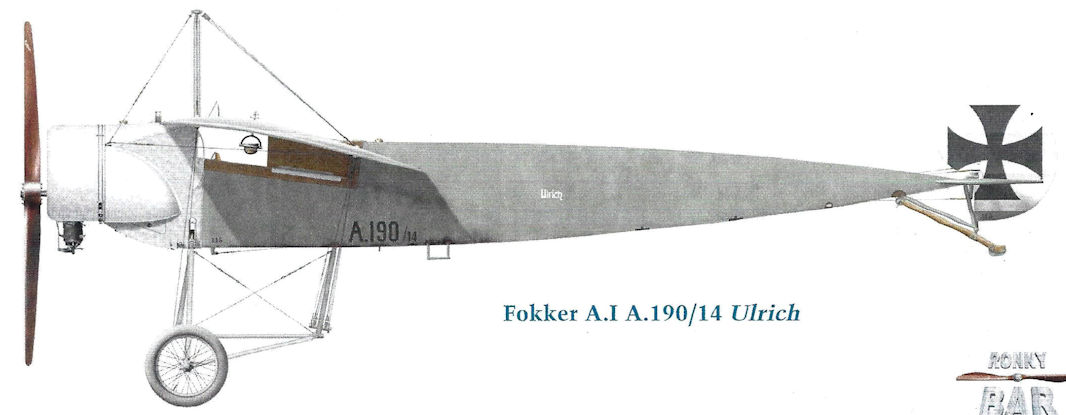A.Weyl Fokker: The Creative Years (Putnam)
At the time when the initial production order for M.5s was placed, the IdFlieg let Fokker know that in their opinion a two-seat aircraft would be preferable for military purposes. The emphasis in Germany, as in France, had shifted from the single-seat tactical scout to the light artillery spotter carrying an observer and able to operate from front-line fields close to the batteries. For this requirement an aircraft giving a good downward view and adequate room for the observer was essential: the cramped accommodation of the M.5 would not do. It was therefore suggested to Fokker that he should develop his monoplane into a proper two-seater while retaining its main characteristics.
Fokker and Kreutzer doubtless knew that some French designers had resorted to the parasol wing arrangement to provide a completely unobstructed downward view. Fokker also knew that the Pfalz concern had acquired a licence to build the Morane-Saulnier Parasol monoplane. One such Morane-Saulnier Parasol had been built at Speyer and had been demonstrated at Schleissheim to the Bavarian Army authorities.
Fokker did not like the idea of having an aircraft’s centre of gravity below its wing, possibly because he had heard that parasol monoplanes could be subject to unpleasant slow oscillations. He did not go the whole hog with a true parasol monoplane but produced an aircraft with its wing slightly above the fuselage in a position roughly mid-way between those that characterized shoulder-wing and parasol monoplanes. This was the Fokker M.6.
The span and wing area of the M.6 were roughly the same as those of the M.5L. As on the single-seater, there were three bracing points on each spar and the bracing pylon was as tall as that of the M.5L fuselage. The cabane structure to which the wings were attached supported the front spars about 16 in. above the top longerons; the steel tube that connected the rear spars formed a sketchy division between the two cockpits. To facilitate access to the cockpits the centre-section was left uncovered, and the trailing portion of each wing was cut away.
The M.6 fuselage was slightly longer than that of the M.5L. The seats were separate but still so close together that little more than a very small hand camera and a signal pistol could be accommodated. The M.6 differed from contemporary Service aircraft of the A and B categories by accommodating its pilot in the front seat. This gave him a good field of forward vision, but he and his observer were not otherwise comfortable, for the cockpits were excessively draughty.
The M.6 was a short-lived and unlucky aircraft. It was evaluated by air corps officers at Schwerin, and Fokker was urged to improve the downwards field of vision. While it was still undergoing its evaluation trials, Oberleutnant Kolbe tried it. It was his second flight in a Fokker monoplane, and he took Hauptmann Ruff, a pupil of the Goerries school, with him as passenger. While airborne Kolbe apparently misused a three-way fuel cock: when the engine stopped, deprived of fuel, he attempted an emergency landing in allotments near the aerodrome but the aircraft crashed. It was wrecked; the pilot died hours later from an unsuspected internal haemorrhage; Ruff escaped with a fractured thigh.
By now the clouds of war were massing and aircraft were urgently wanted. The Fokker M.8, an improved artillery spotter, was virtually ordered “off the drawing board” - the Army placed a provisional order for twenty, paying their usual one-third of the price in advance, before the prototype flew. The type number M.7 had been allocated to a light two-seat biplane, powered by the 80-h.p. Oberursel but having a longer range than its predecessors. This aircraft was designed to meet the requirements of the German Admiralty, who were also in a hurry to obtain aircraft and were willing to pay handsomely for them.
The Austro-Hungarian government, desperately short of aircraft because of their misguided policy of standardizing the faulty Lohner biplane, also came to Fokker seeking military aircraft for early delivery. They also offered to provide facilities for the licence production of suitable types in Austria and Hungary.
Fokker eagerly accepted all orders without considering whether he could fulfil them. The first orders for the M.5 and his success as an aerobatic performer had set his business on its feet and it was making a handsome profit. The Military Flying School was run in exemplary fashion by de Waal: it was working to capacity, had suffered few crashes, and was making good money. Fokker’s Dutch backers began to receive worthwhile dividends from their investments and realized that aviation was a Good Thing; his family saw that their erstwhile black sheep was not such a fool in business after all. And the war made things even better.
WAR
On the first day of mobilization, Fokker and all other German aircraft manufacturers were informed by telegram that all aviation material was subject to requisition by the Army. The Navy protested, for they had placed orders of their own with Fokker by arrangement with the War Ministry. Naval officers hastened to Schwerin and offered higher prices for anything with wings. Officers from operational units also came, bent on acquiring some of the coveted new Fokkers.
Fokker was delighted to find himself for once in a seller’s market. He was only too willing to sell to anybody: had the Allies come for his aeroplanes he would have sold to them just as readily. For cash, of course.
So he sold whatever aircraft were at Schwerin to the highest bidder, and at prices he would never have dreamt of a few weeks earlier. He quickly got rid of all the junk that had accumulated for want of customers. He even sold aircraft that did not belong to him: for instance, von Bismarck’s precious Gartenlaube and the M.3A that he had palmed off on Worobieff.
On the following day Leutnant von Buttlar came to fetch his gruner Vogel (green bird) M.5L for his squadron. Fokker had not dared to sell that.
Another visitor was Colonel von Eberhardt, who delivered a stern and pointed homily to Fokker. The Inspector found that production at Schwerin was lamentably inadequate. By accepting orders from the Army, the Navy, and from Austria, Fokker had undertaken far more than his factory could produce; he was messing about with experiments instead of getting on with the production of aircraft that the Army now needed so urgently; Fokker ought to realize that output was all that mattered, at the moment.
The rebuke was well merited. Fokker had rashly accepted every order offered to him, quoting impossible delivery dates, without considering how they could possibly be fulfilled. The Army had long-standing orders for M.5Ls and for a substantial number of two-seat artillery spotters developed from the M.6. The Navy had just ordered seven two-seat biplanes of a type (M.7) still to be built (Order No. B.1043 to 1049/14) at £825 per airframe, without engine and instruments - a very good price. No performance had been specified, and Fokker had promised delivery from October 1914. He had promised the Austrians all the aircraft they wanted; and they wanted more than his whole factory could produce in a year.
Fokker’s works consisted of a pitiful collection of old huts and shacks, neither equipped nor manned for any kind of quantity production. The most that Fokker and his collaborators had ever produced were two of the simplest aeroplanes at a time. The greatest handicap of all was Fokker’s lack of technical knowledge, for he did not know how to set about production in batches or series. His reluctance to invest in production equipment was fatal. Lissauer’s advice had long been forgotten.
Fokker’s business instinct told him that the IdFlieg now meant business: if he was not to be kicked out of his works he would have to come up to scratch. Moreover, as an alien in a country at war he could scarcely expect to be given special consideration. He therefore promised to give priority to the Army, to whom he was so much indebted, and to speed the delivery of Army aircraft. The M.7 biplane for the Navy and for the Austrians was set aside, and all efforts were concentrated on the completion and testing of the M.8 artillery-spotting monoplane. A strenuous day-and-night routine for the staff began; more workmen were engaged and the workshops were enlarged.
Glad to see the efforts of the Fokker team, Col. von Eberhardt decided to form an artillery-observation squadron equipped throughout with the new M.8. The order for this type was increased to more than forty aircraft; they were designated Fok. A, later Fok. AT. They and the back-log of 24 M.5L were to be produced with all possible speed.
At the same time, thirty officers were attached to the Fokker school, most of them for conversion training. Unfortunately, the school had been left with very few aeroplanes, none of which had a rotary engine, and it was difficult for de Waal and his instructors to keep flying training going. Worobieff’s M.3A, which the Service had returned as unsuitable, was pressed into use as a trainer. Unpleasant to handle and barely controllable, it was cordially disliked by every instructor. Fokker recognized it as a source of danger and suggested to Ditzuleit (whose exclusive training aircraft it somehow became) that he should put it out of its misery by crashing it. This was ultimately achieved, quite unintentionally, in the course of an emergency landing. Shortly afterwards Ditzuleit joined the Navy to become their Fokker pilot.
Fokker realized that the school needed more aircraft, and went on building up his labour force to meet the increasing demands. Fortunately the structural simplicity of Fokker aircraft enabled inexperienced workers to make a useful contribution to production in a short time.
From the fronts came news of the exploits of Fokker aircraft. Late in August, Hauptmann Goebel had to make a forced landing in French-held territory during a flight to Sedan from Air Depot No. 4 at Trier. Evidently the Oberursel had failed again. On August 30, 1914, Leutnant von Beaulieu, flying an M.5, made an impressive reconnaissance in the Charleroi sector. Leutnant von Hiddessen had been over Paris in a Fokker. In September an M.5 had been forced to land near St.Omer and was captured intact. Allied pilots flew it up to 8,000 ft. and were quite impressed.
One of the pilots who made good use of the M.5L was Oblt. H. Kastner. He was with No. 38 Feldfliegerabteilung, stationed at Brussels and later at Ghent. Using his M.5L as a two-seater with Lt. Niemann as observer, Kastner made successful reconnaissances during the Dixmude fighting on the Yser. He later took the monoplane to the Eastern Front, where it ended its career during a forced landing, the Oberursel having been at fault again.
Kastner’s notable successes on the Fokker made other squadrons eager to have similar aircraft. Among them was the squadron led by Oblt. Freiherr von Freyberg.
Fokker kept his promise to make speedy deliveries of aircraft to the Army, for the first production M.8s were handed over in October 1914.
The M.8 was a true shoulder-wing monoplane, the wings being attached to the upper longerons. Large apertures were provided in the fuselage sides under the wings to give the occupants a good field of downward vision; side-mounted windscreens were fitted to the operational M.8s to make downward observation more comfortable. The crew sat in close tandem in the single large cockpit.
The span and chord of the wings had been increased, and the area was now 20 sq. m. (216 sq. ft.); the wing loading was therefore about the same as that of the M.5L flown as a single-seater, consequently the take-off and climb were good. The spars were farther apart than those of the M.5 and the ribs were more widely spaced, to keep the weight down. The wing-bracing cables had quick-release devices for easy dismantling in the field. For road transport the wings were strapped along the sides of the fuselage. The M.8, like all Fokker aircraft, was eminently transportable. This was an important consideration, for German replacement aircraft were never as a rule flown to the front or to base formations.
The M.8 fuselage was about 40% wider than that of the M.5 and two slim people could even sit side-by-side in it. The main petrol tank, with a separate compartment for the castor oil, was mounted behind the engine and had a fuel gauge that could easily be seen by the pilot; the feed was by gravity. Behind the cockpit was a supplementary tank of the kind intended for von Bismarck’s Gartenlaube. Both tanks were of brass sheet and had an oval cross-section. The petrol feed from the rear tank to the gravity tank was by pressure. To provide the necessary pressure a hand pump was fitted in the cockpit; later, a windmill-driven fuel pump was fitted.
The M.8 incorporated several refinements of detail. The control column had a convenient two-handle grip with the blip-switch button between the handles. This feature was reproduced on all subsequent Fokker aircraft.
In their flying characteristics the Fokker M.8 and its relations differed from the typical contemporary German B-types. The Fokkers did not automatically assume the correct angle of bank when turning: they had to be rolled with their powerful wing warping and held in the banked attitude while turning. The German pilots had to learn this difference in handling. They also had to learn that, in gusty weather, the M.8 flew best when the stick was held loosely so that the wings could flex freely under the gust loads. The M.8 then rode through gusts far more smoothly than other German aircraft with their great stability, and the strain on pilot and aircraft was much less.
The M.8 never passed a proper acceptance test, but it seems that strength demonstrations satisfied the authorities even though they were made in the usual Fokker manner with “live loads” standing on the wings of the inverted aircraft.
As planned by the IdFlieg in August, two Fokker squadrons of six aircraft each were formed for artillery spotting and tactical reconnaissance. These units, Feldfliegerabteilungen 40 and 41, flew Fokker M.8 monoplanes exclusively until late 1915. In the Service the M.8 was designated Fok. A (later Fok. A.I) to distinguish it from the M.5K and M.5L.
Individual Fok. A’s were allocated to various other field squadrons and to the newly formed B.A.O. and B.A.M. formations for target reconnaissance. All the Fok. A’s were flown by selected pilots. One of the earliest of these was Lt. Parschau of B.A.O. who had previously managed to get one of the few M.5s in the Service. He had become friendly with Fokker, who appreciated his splendid airmanship.
On November 11, 1914, Parschau landed his Fok. A at Pontfaverger in the Rheims sector, having come from the base aircraft park at Rethel. By chance he met the young Lt. Oswald Boelcke of Feldfliegerabteilung 13 whom he had known at the Darmstadt air station (where Boelcke had completed his training on biplanes). Boelcke took an immediate liking to the Fokker and applied for one. Although he had learned to fly at the Halberstadt flying school, it is doubtful whether Boelcke had flown a rotary-engined aeroplane before. On November 26 a Fok. A became available at Rethel but was reserved for another officer. When Boelcke complained vigorously another Fok. A was ordered for him. It was delivered on December 9, and he flew it immediately from Rethel to Pontfaverger, and from then on it was in regular operational use for short-range missions.
Other pilots had to undergo a conversion course at Schwerin unless, like Oblt. H. Kastner and Oblt, von Hiddessen, they had previously flown similar monoplanes. Oblt. A. Muehlig-Hofmann (the first military pilot of the Fokker Spider) and B. Wentscher were among those who went to Schwerin to collect their Fok. A monoplanes. Both arrived there during December 1914. Muehlig-Hofmann left in January 1915 with Fok. A. 195/14, which he flew extensively on the Eastern Front for artillery observation. He had the opportunity of comparing it with a captured Russian Morane-Saulnier Parasol, and found the Fok. A more pleasant to handle; the Morane was distinctly more prone to spin. Wentscher also flew on the Eastern Front, spotting for the artillery of the 3rd Army. His was the only Fokker in that Army; later he had one of the first Fokker M.10 biplanes for the same kind of work, but equipped with wireless for signalling to the artillery batteries.
Oblt. Kastner flew his Fok. A.202/14 with conspicuous success on the Eastern Front until he was ordered to form Feldfliegerabteilung 62, a unit whose name will appear in later pages.
Fok. A.136/14 was one of the few M.8s that were supplied to the coast-defence units of the Navy.
The official (but not necessarily comprehensive) Army records for December 1914 mention ten fully operational Fok. A of the M.8 type. By June 1915 the number had risen to fifteen, but thereafter the remaining M.8s were allocated to training units. Their operational value had declined because they carried no wireless and their climbing performance was no longer good enough even for the Eastern Front.
As trainers the M.8s rendered sterling service up to the end of 1917, notably at Schwerin. Some were later used at units training fighter pilots, and it is probable that more M.8s were built for instructional purposes than for operational duties.
The speed with which the M.8 was produced was a considerable achievement, especially in view of the primitive and limited facilities at Schwerin. Early in 1915 photographs were published showing a batch of fourteen M.8s and one M.5L ready for delivery at Schwerin. But the pressing demands of the front and the schools were more than Fokker’s works could meet. The Halberstadter Flugzeugwerke G.m.b.H, was therefore asked to build a batch of M.8s under licence. These aircraft had the factory type number Halberstadt F.14 and the service designation Halb. A.II (Halb. A.I was a Taube type supplied to air corps units before the war).
The Halb. A.II with 80-h.p. Oberursel was practically indistinguishable from the Fokker-built trainer version of the M.8. Until the large-scale production of the Fok. D.VH was initiated in 1918 the M.8 was the only Fokker design to be produced under licence. The first two Halb. A.II appeared at the front late in 1914. In the spring of the following year five were operational. All were withdrawn in August 1915 and taken over by the military flying school at Halberstadt. The Halb. A.II weighed 363 kg. empty and 645 kg. in flying trim; its load was 180 kg., and the wing weight was stated to be 95 kg. The Halberstadt concern did not seek to develop its experience with welded steel-tube fuselages but reverted to wooden construction and adhered to it until the end of the war.
A Fok. A was captured intact in the British sector early in 1915. In the descriptions that appeared in French and British aviation journals the Fokker was dismissed as an inferior copy of the Morane-Saulnier, and it seemed that no Allied pilot had tested the machine sufficiently thoroughly to establish its full capabilities. Its performance was of course not outstanding, especially at altitude; and the Oberursel was much inferior to the rotary engines available to the Allies.
If the Fokker M.8 was popular with its crews the engineering experts at home were less enthusiastic. Reports from the front indicated an alarmingly poor serviceability rate for Fokker aircraft of all types and a high accident rate. The root of the trouble was the engine, its unreliability made the greater because of maintenance by unskilled mechanics. At the behest of the IdFlieg a commission of three competent civilian engineers were sent to the front to make a technical appraisement of the Fokker A’s of Feldfliegerabteilung 40.
The findings of the investigation were by no means unfavourable, considering that the new aircraft had been put into production and sent to the front with little time for trials. However, the commission questioned the advisability of welding vital components, for welding was still prohibited in the official technical requirements. The commission thought that the Fokker fuselage should be replaced by a wooden structure similar to that of the Pfalz monoplanes. Dorner went to Schwerin to discuss with Fokker the redesign of the Fok. A.
Fokker, always out of his depth when tackled by engineering experts, passed Dorner to Kreutzer for the discussion of the technical aspects. Kreutzer, nonplussed by the eminently qualified designer’s weighty arguments against the reliability of welding in general and welded steeltube fuselages in particular, called in Platz.
Dorner immediately recognized Platz as the welding expert who had done some exceedingly tricky jobs for him some years before. An atmosphere of friendly understanding was quickly created and Dorner was prepared to hear Platz’s arguments in favour of the Fokker construction methods. Having heard them he agreed to Platz’s suggestion that fuselages or other components specified by Dorner should be tested to destruction and that, if they proved to have a satisfactory margin of strength without failure on account of faulty welding, the IdFlieg commission would not, at least for the time being, insist upon the re-design of the monoplane.
Platz quickly conducted the required proof-loadings on specimens selected by Dorner. Dorner, of course, was present at these tests; Fokker kept out of the way. The results were exceedingly good: none of the welding proved defective; and in fact the tested structures far exceeded in strength and resilience what Kreutzer and Platz had claimed. There could be no doubt that the structural methods were entirely sound and safe.
Dorner returned to Adlershof, and nothing further was heard at Schwerin about wooden fuselages for the Fokker A. Nevertheless the technical requirements governing the acceptance of military aircraft continued to state that weldings in vital structural components were forbidden. Eighteen months later the welded steel-tube fuselage again fell under suspicion.
J.Herris Fokker Aircraft of WWI. Vol.1: Spinne - M.10 & Watercraft (A Centennial Perspective on Great War Airplanes 51)
Fokker M.6
By the outbreak of war in August 1914, the German Army, like other European powers, realized that two-seat aircraft would be more effective for reconnaissance. The pilot was preoccupied flying the aircraft, so provision of an observer who could give complete attention to the task of reconnaissance could give better results.
The M.6 was a two-seat derivative of the M.5 with the front wing spar raised 40 cm above the top longeron to give the crew a good field of view downward between the wing root and fuselage. Unfortunately, the downward view was not as good as anticipated and the cockpit was cramped.
Power was from an 80 hp Oberursel and the fuselage was slightly longer than the M.5 due to the second seat. The pilot sat in front.
The only M.6 was built in June 1914 and crashed on the 23rd, due to a faulty setting of the fuel cock. Pilot Oblt. Kolbe was killed and passenger Hptm. Ruff was badly injured.
Fokker M.6 Specifications
Engine: 80 hp Oberursel U.0
Fokker M.8 (A.I)
The M.8 monoplane was very similar in configuration to the M.6 but had the widened fuselage of the M.7, although it had a single large cockpit. The pilot sat in front. The wings were larger in span and chord to reduce wing loading and improve performance and handling. Wing warping was used for roll control. Construction was typical Fokker; wooden wings and welded steel tube fuselage and tail surfaces.
A space was left between the wings and fuselage to give the crew a good downward view. The engine was an 80 hp Oberursel and the control column was fitted with a two-handle grip that had been standard on Fokker designs since the M.5.
The Army bought about 80 M.8 aircraft for reconnaissance duties and gave it the military designation Fokker A.I.
The Fliegerschule used 22 A.I, s/n S.1-S.22. Work number 97 was S.20; later it became A 20/16 when assigned to the Fliegertruppe.
When the Fliegerschule was closed, the Fliegertruppe took over these aircraft as A.I 1-22/16.
Fokker M.8 (A.I) Specifications
Engine: 80 hp Oberursel U.0
J.Herris, J.Scott Fokker Aircraft of WWI. Vol.2: Eindeckers (A Centennial Perspective on Great War Airplanes 52)
Fokker Eindecker Identification Attributes
Type Engine Armed? Notes
A.I 80 hp Oberursel U.0 (7 cyl) No Shoulder wing, Fokker model M.8
A.II 80 hp Oberursel U.0 (7 cyl) No Fokker model M.5L
A.III 80 hp Oberursel U.0 (7 cyl) One only Only Parschau's A. 16/15 was still marked as an A.III.
E.I 80 hp Oberursel U.0 (7 cyl) Yes Early types based on M.5K airframe. Later types based on M.5 airframe.
E.II 100 hp Oberursel U.I (9 cyl) Yes Fokker M.14 airframe
E.III 100 hp Oberursel U.I (9 cyl) Yes Fokker M.14 airframe. Internal changes unknown.
E.IV 160 hp Oberursel U.III (14 cyl) Yes 2 guns (3 in protos only &. one operational aircraft), based on Fokker M.15 airframe
J.Herris Halberstadt Aircraft of WWI. Volume 1: A-types to C.III (A Centennial Perspective on Great War Airplanes 44)
Halberstadt A.II
The Halberstadt A.II was a single engine, two-seat, shoulder-wing monoplane powered by a 100 hp Oberursel U.I nine-cylinder rotary engine. The fuselage was rectangular in cross section and was made of fabric-covered steel tube. The monoplane wings were of rectangular planform with ailerons, not wing warping. The rudder was a single structure above the fuselage and the undercarriage had two wheels. The fuselage was rectangular and made of wood.
Basically, the A.II was a replica of the Fokker M 8 with minor modifications such as omitting the side windows. A few examples were built in the Autumn of 1914 and saw front-line service as shown by the A-type Frontbestand table.
O.Thetford, P.Gray German Aircraft of the First World War (Putnam)
Fokker M 6
Although the wing was raised, this modified M 5 airframe could not be strictly classed as parasol, as rear spar was fastened to the upper longerons. The M 6 was a two-seater which appeared in June 1914, and the single prototype was subsequently destroyed in a fatal crash. Engine, 80 h.p. Oberursel U O rotary.
Fokker M 8
The M 8 was the production version of the unfortunate M 6. The wing was in the same position, although the forward decking was extended up to the front spar. The fuselage sides were cut away at the cockpit area to give improved downward visibility. First built in September 1914, some thirty machines were supplied (military designation A I) and used on artillery spotting duties. Engine remained 80 h.p. Oberursel, although some sources credit the 100 h.p. engine from that factory.
Журнал Flight
Flight, December 10, 1915.
THE CAPTURED GERMAN FOKKER MONOPLANE
ALTHOUGH not being able to lay any claim to being one of the latest types, such as could the Albatros reconnaissance biplane described recently, the captured Fokker monoplane is interesting, if for no other reason, on account of the example it furnishes of what a German aeroplane constructor can, and does do when laying himself out to incorporate his own ideas of construction into a design which is a palpable "crib" of a successful French design. Let it be said at the outset that, considered as a whole, the Fokker monoplane does not appear to us to be an improvement on the French Morane-Saulnier or on its British version as produced by the Grahame-White Aviation Co. It is true that several of the constructional details are very neatly thought out, but these, we think, are more than counterbalanced by shortcomings in other directions.
Aerodynamically the Fokker monoplane differs from the Morane in its proportions and also in the wing section, which is totally dissimilar to that of the French monoplane, having a much flatter "nose" or leading edge and revealing on inspection an entirely different lower camber with its maximum ordinate much farther back from the leading edge.
When turning to the constructional work of the Fokker monoplane radical departures from the French design are noticed. Chief of these is the building up of the body of steel tubes throughout its entire length. In fact with the exception of the wings, which have spars and ribs of wood, the whole machine is constructed of steel tubing. Whether or not this is an advantage is, perhaps, a debatable point, each of the two forms of construction possessing its own merits and disadvantages. By way of example of the last-mentioned, it may be pointed out that a steel tube, while quite strong in its way, may very easily have its strength dangerously impaired by an in itself trivial cause, such as a slight dent made by the dropping of a tool or even by an accidental knock with the toe of a boot.
In the Fokker monoplane longitudinals as well as struts and cross members of the body are, as we have already pointed out, made of steel tubing wrapped with some material that looks like oil cloth, and the function of which probably is to exclude moisture. In shape the body is of rectangular section tapering like that of the Morane to a horizontal knife-edge at the rear. This horizontal stern post takes the form of a short steel tube which serves as a bearing for the main transverse tube of the elevator. This member, which is exactly similar in form to that of the Morane, is also built up of steel tubes and is partly balanced by the portions of it that are in front of the pivoting line. Of similar construction is the rudder, which, as will be seen from the illustrations, consists, roughly speaking, of two semicircles, of which the smaller is in front of the rudder post, thus serving to bring the centre of pressure and the centre of support closer together than they are in an unbalanced rudder.
Carried partly on an extension of the rudder-post and partly on a pyramid formed by four steel tubes is a short skid, sprung in the usual manner by rubber bands, which prevents the tail planes from coming in contact with the ground.
Pilot and passenger are accommodated in a common cockpit, a seat of the kind generally known as the "bucket" type being provided for the pilot, while the passenger apparently has to be satisfied with just a plain board placed immediately behind the pilot's seat. The controls are of the usual type, a central column for the warp and elevator, and a pivoted footbar for the rudder. At the top the lever is terminated by a double handle grip as shown in one of our sketches. On the central portion of this handle is mounted the cut-out switch for the engine in a position where it is within easy reach of either hand.
Owing to the position of the occupants between the main spars of the wings the view in a downward direction is somewhat restricted. In order to improve it the leading and trailing edges have been cut away near the body as shown in the plan view of the machine, and, probably for purposes of facility in firing downwards, windows have been provided in the upper half of the sides of the body. As the aim of the gunner would be made somewhat more difficult by the rush of air that would find its way inwards and upwards through this opening, a small wind screen has been placed at the forward end of it as shown in the illustrations.
In front the body has been enclosed by aluminium sheeting, a cowl of the same material surrounding the upper half of the engine. This cowl, like so many other parts of the design, is very similar to that of the Morane, being provided at its rearward end with two curved shields, which collect the oil thrown out by the engine and prevent it from being blown back along the sides of the body.
The engine, an 80 h.p. version of the Gnome, known in Germany as the Oberursel, is mounted on overhung bearings a la Morane, and drives an Integral propeller of 8 ft. 4 ins. diameter. The Oberursel does not, as far as one is able to judge from outward appearances, seem to be nearly as well made as the original Gnome, although in fairness to its makers one should perhaps give them the benefit of the doubt and admit that this may be due to hard usage and long service. Otherwise it does not differ, again as far as can be seen from an external inspection, from the Gnome motor of the same type and h.p. The tanks are placed as in the Morane, i.e., the petrol service tank and the oil tank being mounted in the front portion of the body, while the reserve petrol tank is placed just behind the cockpit. Placed above the top covering of the body in front of the wind shield is a petrol gauge, or, as the Germans call it, Benzin Uhl (petrol clock), not inaptly since it is provided with hands like a clock and calibrated to indicate the number of litres of petrol in the tank.
One of the greatest departures from Morane practice is, perhaps, to be found in the design of the under-carriage. Whether Mr. Fokker's chassis design is an improvement on that of the French machine is, to our way of thinking, a very great question. If properly carried out the German form of under-carriage might be equal to the well-known Morane, but, as exemplified in the specimen captured, it certainly leaves room for great improvements in the detail construction. The general arrangement will be readily followed by reference to our illustrations. A longitudinal member, formed of a steel tube, is carried on two pairs of "Vee" steel tubes secured to the lower longitudinals of the body. Hinged to this tube near the point of attachment to the front "Vee" are the two stub axles, which slope downwards towards the wheels. Two other tubes slope upwards to the sides of the body, where they are linked to short transverse horizontal levers pivoted centrally in the floor of the body. Shock absorbers wound round these levers and a transverse strut in the body provide the springing. A diagrammatic sketch of the arrangement will, supplemented by sketches of the details, explain the action. From the axles radius rods in the form of steel tubes run to the apex of the rear "Vee," the hinge forming the fulcrum for the radius rods as well as those for the stub axles being of a decidedly flimsy character. Again, the attachment of the lift cables to the forward end of the longitudinal member of the chassis looks somewhat amateurish, the cables simply being spliced with an eye sufficiently large to slip over the end of the tube, where it is secured by a washer, which again is held in position by a split pin. Although looking rather unfinished, this form of attachment probably is quite adequate, but it cannot compare in neatness with the Morane method of securing the lift cables.
One very neat fitting we noticed in the bracing system of the wings, i.e., the quick release by means of which the bracing cables are attached to the wing spars. It consists, as will be seen from the accompanying sketch, of a hemispherical hollow socket having cut in its side a T-shaped slot and secured, how we were unable to ascertain, to the sheet steel clip gripping one half of the spar. In the top of the T the flat head of the turn buckle has just room to pass, all that is necessary to detach the cable from the spar being to slacken the cable by giving the turnbuckle a few twists and the head may be pulled out of the cross slot of the T. In a similar way the cable is quickly attached by reversing the process.
In plan form the wings of the Fokker are similar to those of the Morane, having their ends considerably raked so as to increase the effectiveness of the warp. The main spars, which are of I section wood, are fitted at the root with a socket terminating in an eye through which a short bolt passes, thereby securing the spar to the corresponding lug on the side of the body of the machine. On each side of the body and a short distance in front of the chassis struts is a bracket having at its outer end an eye of the same size as that of the spar lug. When it is desired to transport the Fokker by road the wings are detached in the manner described above, and the front spar is placed with its root on this bracket, the same bolt that is used for securing the spar in the flying position being employed to secure it to the bracket for transport. A steel hook bolted to the front spar near its outer end fits into a socket a few inches in front of the tail skid attachment, and when a couple of straps have been taken around the wings the machine is ready for transport.
The top wing cables are attached to a two-legged cabane of steel tubes as in the Morane. From the apex of this cabane two cables are taken to the top of the engine bearer, thus staying it in a forward direction. Being placed in line with the front wing spars the top warp cables, which pass over pulleys, naturally slope backwards to the rear spar, thereby providing the rearward staying of the cabane. The lower warp cables run from the wings to short crank levers on the apex of the rear "Vee" of the undercarriage, these levers being operated through vertical cables by a transverse crank lever on the longitudinal rocking shaft inside the body. The warp cables, it will be noticed, are not in line with the front cables, the reason being that the rear spar is longer than the front, and requires different spacing of cable attachments to preserve the load distribution.
 |
J.Herris - Fokker Aircraft of WWI. Vol.1: Spinne - M.10 & Watercraft /Centennial Perspective/ (51)
|
| Fokker A.I A.190/14 Ulrich.
|
 |
J.Herris - Fokker Aircraft of WWI. Vol.1: Spinne - M.10 & Watercraft /Centennial Perspective/ (51)
|
| Fokker A.I A.190/14.
|
 |
J.Herris - Fokker Aircraft of WWI. Vol.1: Spinne - M.10 & Watercraft /Centennial Perspective/ (51)
|
| Fokker A.I A.193/14.
|
 |
J.Herris - Fokker Aircraft of WWI. Vol.1: Spinne - M.10 & Watercraft /Centennial Perspective/ (51)
|
| Fokker A.I A.193/14.
|
 |
J.Herris - Fokker Aircraft of WWI. Vol.1: Spinne - M.10 & Watercraft /Centennial Perspective/ (51)
|
| Fokker A.I A.195/14.
|
 |
J.Herris - Fokker Aircraft of WWI. Vol.1: Spinne - M.10 & Watercraft /Centennial Perspective/ (51)
|
| Fokker A.I A.206/14 Sumpfhuhn flown by Leopold Anslinger, probably with Fl. Abt. 54.
|
 |
J.Herris - Fokker Aircraft of WWI. Vol.1: Spinne - M.10 & Watercraft /Centennial Perspective/ (51)
|
| Fokker A.I A.210/14.
|
 |
J.Herris - Fokker Aircraft of WWI. Vol.1: Spinne - M.10 & Watercraft /Centennial Perspective/ (51)
|
| Fokker A.I A.214/14.
|
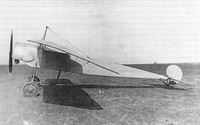 |
J.Herris - Fokker Aircraft of WWI. Vol.1: Spinne - M.10 & Watercraft /Centennial Perspective/ (51)
|
|
|
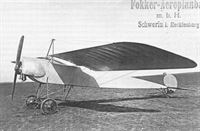 |
J.Herris - Fokker Aircraft of WWI. Vol.1: Spinne - M.10 & Watercraft /Centennial Perspective/ (51)
|
| The Fokker M.6 was derived from the M.5L and like the M.5L was powered by the 80 hp Oberursel U.0 rotary. The forward wing spar was raised above the upper fuselage longeron to give better visibility downward. The pilot occupied the front cockpit, which was necessitated by the finicky rotary engine.
|
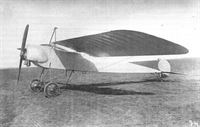 |
J.Herris - Fokker Aircraft of WWI. Vol.1: Spinne - M.10 & Watercraft /Centennial Perspective/ (51)
|
|
|
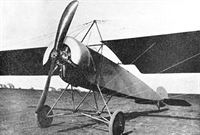 |
A.Weyl - Fokker: The Creative Years /Putnam/
|
| A close-up of the M.6.
|
 |
J.Herris - Fokker Aircraft of WWI. Vol.1: Spinne - M.10 & Watercraft /Centennial Perspective/ (51)
|
| Fokker M.6. (Peter M. Grosz collection/STDB)
|
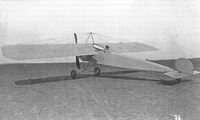 |
J.Herris - Fokker Aircraft of WWI. Vol.1: Spinne - M.10 & Watercraft /Centennial Perspective/ (51)
|
| Seated in the cockpit of the M.6 is Schmidt, Fokker’s mechanic.
|
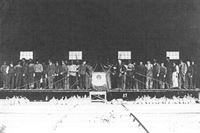 |
J.Herris - Fokker Aircraft of WWI. Vol.1: Spinne - M.10 & Watercraft /Centennial Perspective/ (51)
|
| Fokker M.6 under structural testing in the factory. (Peter M. Grosz collection/STDB)
|
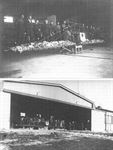 |
J.Herris - Fokker Aircraft of WWI. Vol.1: Spinne - M.10 & Watercraft /Centennial Perspective/ (51)
|
| Fokker M.6 under structural testing in the factory. (Peter M. Grosz collection/STDB)
|
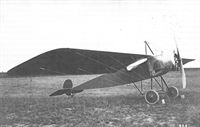 |
J.Herris - Fokker Aircraft of WWI. Vol.1: Spinne - M.10 & Watercraft /Centennial Perspective/ (51)
|
| The Fokker M.8 prototype. (Peter M. Grosz collection/STDB)
|
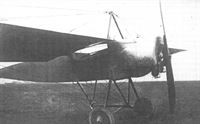 |
J.Herris - Fokker Aircraft of WWI. Vol.1: Spinne - M.10 & Watercraft /Centennial Perspective/ (51)
|
| The Fokker M.8 prototype; one footstep was mounted on the port side. (Peter M. Grosz collection/STDB)
|
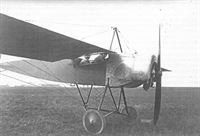 |
J.Herris - Fokker Aircraft of WWI. Vol.1: Spinne - M.10 & Watercraft /Centennial Perspective/ (51)
|
| A crew in the Fokker M.8 prototype. The machine-turned metal engine cowling was a typical Fokker feature. The M.8 was designated the Fokker A.I in Army service. It was powered by an 80 hp Oberursel U.0 that had 7 cylinders. The observer occupied the rear cockpit. It was license built as the Halberstadt A.II. (Peter M. Grosz collection/STDB)
|
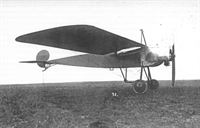 |
J.Herris - Fokker Aircraft of WWI. Vol.1: Spinne - M.10 & Watercraft /Centennial Perspective/ (51)
|
| The Fokker M.8 prototype with single footstep. (Peter M. Grosz collection/STDB)
|
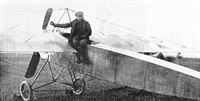 |
A.Weyl - Fokker: The Creative Years /Putnam/
|
| Martin Kreutzer on the Fok. A.I, No. A.215/14 (Factory No. 15).
|
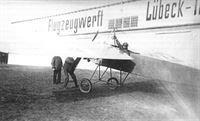 |
J.Herris - Fokker Aircraft of WWI. Vol.1: Spinne - M.10 & Watercraft /Centennial Perspective/ (51)
|
| Fokker A.I and pilot at Flugzeugwerft Lubeck-Travemunde. (Peter M. Grosz collection/STDB)
|
 |
J.Herris - Fokker Aircraft of WWI. Vol.1: Spinne - M.10 & Watercraft /Centennial Perspective/ (51)
|
| Fokker A.I ready for flight from a snowy airfield. (Peter M. Grosz collection/STDB)
|
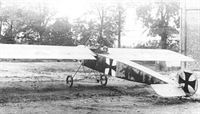 |
J.Herris - Fokker Aircraft of WWI. Vol.1: Spinne - M.10 & Watercraft /Centennial Perspective/ (51)
|
| A crew in their well-used Fokker A.I (M.8). The serial number is obscured by oil stains from its rotary engine but may be A210/15. (Peter M. Grosz collection/STDB)
|
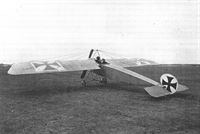 |
J.Herris - Fokker Aircraft of WWI. Vol.1: Spinne - M.10 & Watercraft /Centennial Perspective/ (51)
|
| Fokker A.I with crew ready for a mission. The serial is not fully legible but appears to be 98/14. (Peter M. Grosz collection/STDB)
|
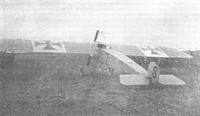 |
J.Herris - Fokker Aircraft of WWI. Vol.1: Spinne - M.10 & Watercraft /Centennial Perspective/ (51)
|
| Fokker A.I 'S7'; the 'S' on the rudder indicates a school aircraft. S7 was werknummer 149. (Peter M. Grosz collection/ STDB)
|
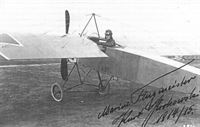 |
J.Herris - Fokker Aircraft of WWI. Vol.1: Spinne - M.10 & Watercraft /Centennial Perspective/ (51)
|
| Fokker A.I A.99/14 with pilot. (Peter M. Grosz collection/STDB)
|
 |
J.Herris - Fokker Aircraft of WWI. Vol.1: Spinne - M.10 & Watercraft /Centennial Perspective/ (51)
|
| Fokker A.I in the field. The serial is illegible but may be A201/14 seen more clearly in a damaged state. (Peter M. Grosz collection/STDB)
|
 |
J.Herris - Fokker Aircraft of WWI. Vol.1: Spinne - M.10 & Watercraft /Centennial Perspective/ (51)
|
| Fokker A.I with crew. (Peter M. Grosz collection/STDB)
|
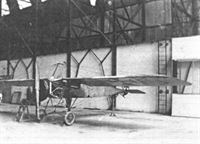 |
J.Herris - Fokker Aircraft of WWI. Vol.1: Spinne - M.10 & Watercraft /Centennial Perspective/ (51)
|
| This is a Halberstadt A.II; the give-away is the recessed footstep in the fuselage. All Fokker-built A.Is had stirrups which hung below the bottom longerons. (Peter M. Grosz collection/STDB)
|
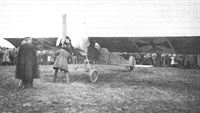 |
J.Herris - Fokker Aircraft of WWI. Vol.1: Spinne - M.10 & Watercraft /Centennial Perspective/ (51)
|
| A Fokker M.8 (A.I) is surrounded by onlookers. The 'S' on the rudder indicates a trainer. (Peter M. Grosz collection/ STDB)
|
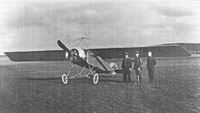 |
J.Herris - Fokker Aircraft of WWI. Vol.1: Spinne - M.10 & Watercraft /Centennial Perspective/ (51)
|
| This is a Halberstadt A.II license-built version of the Fokker A.I. The give-away is the recessed footstep in the fuselage. All Fokker-built A.II's had stirrups which hung below the bottom longerons. (Peter M. Grosz collection/STDB)
|
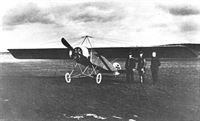 |
J.Herris - Halberstadt Aircraft of WWI. Volume 1: A-types to C.III /Centennial Perspective/ (44)
|
| Halberstadt A.II. A handful were used operationally in the winter and spring of 1915.
|
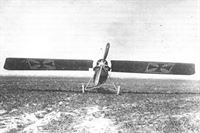 |
J.Herris - Fokker Aircraft of WWI. Vol.1: Spinne - M.10 & Watercraft /Centennial Perspective/ (51)
|
| Front view of a Fokker A.I. (Peter M. Grosz collection/STDB)
|
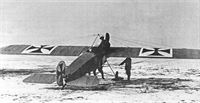 |
J.Herris - Fokker Aircraft of WWI. Vol.1: Spinne - M.10 & Watercraft /Centennial Perspective/ (51)
|
| Crewmen with a Fokker A.I in the snow. (Peter M. Grosz collection/STDB)
|
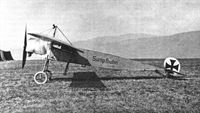 |
J.Herris - Fokker Aircraft of WWI. Vol.1: Spinne - M.10 & Watercraft /Centennial Perspective/ (51)
|
| Fokker A.I A.206/14 Sumpfhuhn ('Moorhen'). The Fokker A.I (military designation for the Fokker M.8) had a.n 80 hp Oberursel U.0 rotary. The two-seat 'cavalry' type was intended for visual reconnaissance; the windows under the shoulder-mounted wing gave the crewmen better downward visibility. Leopold Anslinger flew it, presumably with Fl.Abt.54 on the Eastern Front in 1914/15.
|
 |
J.Herris - Fokker Aircraft of WWI. Vol.1: Spinne - M.10 & Watercraft /Centennial Perspective/ (51)
|
| A.206/14 is in front of its canvas hangar. (Peter M. Grosz collection/STDB)
|
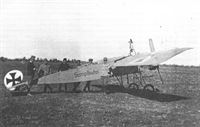 |
J.Herris - Fokker Aircraft of WWI. Vol.1: Spinne - M.10 & Watercraft /Centennial Perspective/ (51)
|
| More photos of Fokker A.I A.206/14 Sumpfhuhn. Leopold Anslinger flew it, presumably with Fl.Abt. 54 on the Eastern Front in 1914/15.
|
 |
J.Herris - Development of German Warplanes in WWI /Centennial Perspective/ (1)
|
Another view of A.206/14 Sumpfhuhn with pilot Leopold Anslinger that clearly shows the underwing 'windows' for good downward visibility.
Class A aircraft were unarmed monoplanes, both one and two seat. Most A-types were the Taube configuration, but there were also Fokker (shown here) and Pfalz A-types.
|
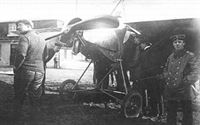 |
J.Herris - Fokker Aircraft of WWI. Vol.1: Spinne - M.10 & Watercraft /Centennial Perspective/ (51)
|
| Fokker A.I being inspected by servicemen. (Peter M. Grosz collection/STDB)
|
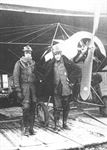 |
J.Herris - Fokker Aircraft of WWI. Vol.1: Spinne - M.10 & Watercraft /Centennial Perspective/ (51)
|
| An unidentified crew in front of their Fokker A.I. (Peter M. Grosz collection/STDB)
|
 |
J.Herris - Fokker Aircraft of WWI. Vol.1: Spinne - M.10 & Watercraft /Centennial Perspective/ (51)
|
Oberleutnant A. Muehlig-Hofmann photographed in January 1915 with his Fokker M.8 (Fok. A.I), A.195/14.
Aviator and his Fokker A.I with decorated cowling. Previous publications have identified the pilot with Fokker A.I 195/14 as Oblt. Albert Muhlig-Hoffmann. (Peter M. Grosz collection/STDB)
|
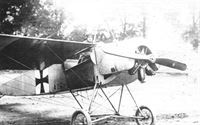 |
J.Herris - Fokker Aircraft of WWI. Vol.1: Spinne - M.10 & Watercraft /Centennial Perspective/ (51)
|
| A crewman in Fokker A.I A210/14 at the front with Oberursel U.0. Footsteps were attached to both sides. (Peter M. Grosz collection/STDB)
|
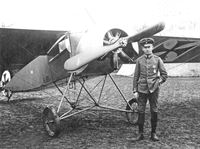 |
J.Herris - Fokker Aircraft of WWI. Vol.1: Spinne - M.10 & Watercraft /Centennial Perspective/ (51)
|
| Fokker A.I A190/14 Ulrich with pilot. The aircraft has a Garuda propeller. Aircraft at this time had limited markings. Work Number 115 was stenciled by the undercarriage strut. (Aviation Heritage Trust)
|
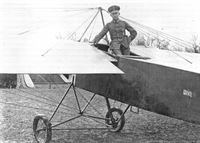 |
J.Herris - Fokker Aircraft of WWI. Vol.1: Spinne - M.10 & Watercraft /Centennial Perspective/ (51)
|
| Fokker A.I A190/14 Ulrich with pilot. Work Number 115 was stenciled by the undercarriage strut and the name was painted in white in small letters. The upper and side surfaces of 190/14 were painted a color thought to be Feldgrau (Field Gray), and as all stencils are visible it was surely done at the factory. The insignia are painted over white backgrounds. Although from the second production batch it had only a single elevator control horn. (Aviation Heritage Trust)
|
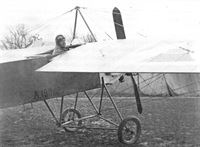 |
J.Herris - Fokker Aircraft of WWI. Vol.1: Spinne - M.10 & Watercraft /Centennial Perspective/ (51)
|
| Fokker A.I A190/14 Ulrich with pilot. The aircraft has a Garuda propeller. Aircraft at this time had limited markings. Work Number 115 was stenciled by the undercarriage strut. (Aviation Heritage Trust)
|
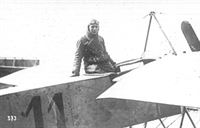 |
J.Herris - Fokker Aircraft of WWI. Vol.1: Spinne - M.10 & Watercraft /Centennial Perspective/ (51)
|
| A pilot in his Fokker A.I 'S11' at the Fokker flying school. (Peter M. Grosz collection/STDB)
|
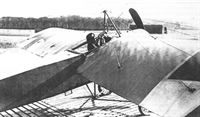 |
J.Herris - Fokker Aircraft of WWI. Vol.1: Spinne - M.10 & Watercraft /Centennial Perspective/ (51)
|
| An unidentified Fokker A.I whose pilot is handling a flexible gun that has been added. (Peter M. Grosz collection/STDB)
|
 |
J.Herris - Fokker Aircraft of WWI. Vol.1: Spinne - M.10 & Watercraft /Centennial Perspective/ (51)
|
Bernard de Waal sitting atop a Fokker A.I. He was a close associate of Fokker and head of the flying school at Schwerin-Gorries. The text reads:
"Und nun erfulle dein Zweck,
Sei stets intakt, sitz nie im Dreck,
Dein Fahrgestell sei immerganz,
Und nie verbogen sei dein Schwanz.
Dich meistert einer der es kann,
Bedenke: ein neutraler Mann,
Ein Mann aus Eisen und nicht aus Lehm,
Bernard de-Waal = sehr angenehm."
Loosely translated as:
"And now serve your purpose:
(may you) always be intact, never sit in the mud,
Your undercarriage always whole
And your tail never buckled.
One masters you who can
Take into consideration: an impartial man,
A man made of iron and not of clay,
Bernard de-Waal = delighted to meet you."
(Peter M. Grosz collection/STDB)
|
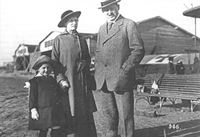 |
J.Herris - Fokker Aircraft of WWI. Vol.1: Spinne - M.10 & Watercraft /Centennial Perspective/ (51)
|
| Reinhold Platz and his family. Platz was Fokker's welding specialist and was largely responsible for producing the iconic Fokker steel tube fuselages. The blurry aircraft behind them is a Fok A.I. He was not the designer of the entire aircraft as claimed by some authors and only ever claimed to be a skilled welder. (Peter M. Grosz collection/STDB)
|
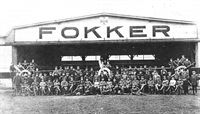 |
J.Herris - Fokker Aircraft of WWI. Vol.1: Spinne - M.10 & Watercraft /Centennial Perspective/ (51)
|
| Fokker staff and students of the Fokker flying school in front of the main hangar at the Schwerin-Gorries airfield. Fokker A.I aircraft serve as part of the background. (Peter M. Grosz collection/STDB)
|
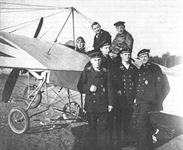 |
J.Herris - Fokker Aircraft of WWI. Vol.1: Spinne - M.10 & Watercraft /Centennial Perspective/ (51)
|
| Sailors pose with a Fokker A.I apparently owned by the Navy. The lettering below the wing reads '149H'; 149 is the work number. Does the "H" signify the use of the third wheel? Ernst Ditzuleit is standing at left. (Peter M. Grosz collection/STDB)
|
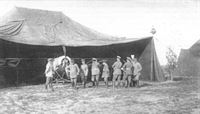 |
J.Herris - Fokker Aircraft of WWI. Vol.1: Spinne - M.10 & Watercraft /Centennial Perspective/ (51)
|
| Fokker A.I in its tent hangar in the field. (Peter M. Grosz collection/STDB)
|
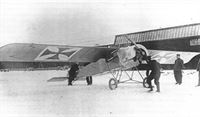 |
J.Herris - Fokker Aircraft of WWI. Vol.1: Spinne - M.10 & Watercraft /Centennial Perspective/ (51)
|
| Fokker A.I A.96/14 being propped on a snowy airfield for takeoff. (Peter M. Grosz collection/STDB)
|
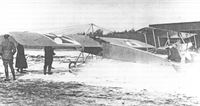 |
J.Herris - Fokker Aircraft of WWI. Vol.1: Spinne - M.10 & Watercraft /Centennial Perspective/ (51)
|
| Fokker A.I A.196/14 being run up; the exhaust is significant. (Peter M. Grosz collection/STDB)
|
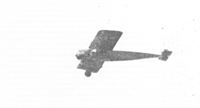 |
J.Herris - Fokker Aircraft of WWI. Vol.1: Spinne - M.10 & Watercraft /Centennial Perspective/ (51)
|
| Fokker A.I in flight. (Peter M. Grosz collection/STDB)
|
 |
Журнал - Flight за 1915 г.
|
| "FETCHED DOWN." A Fokker monoplane, of which the Germans employed a considerable number during the earlier part of the war. These machines are now mostly used for school work.
|
 |
Журнал - Flight за 1915 г.
|
| Three-quarter rear view of the captured Fokker monoplane.
|
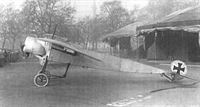 |
J.Herris - Fokker Aircraft of WWI. Vol.1: Spinne - M.10 & Watercraft /Centennial Perspective/ (51)
|
| This is the lone Fokker A.I captured by the British. It was the subject of an article in Flight magazine and is seen here on display at Whitehall in London. It was from the first production batch; its exact identity remains elusive but may be 105/14; its work number appears to be 93. One odd detail is that it carries nose panels with a "tortoise-shell" pattern rather than the usual Fokker swirl pattern. These are usually seen on Halberstadt-built M.8s. (Peter M. Grosz collection/STDB)
|
 |
Журнал - Flight за 1915 г.
|
| Three-quarter front view of the Fokker monoplane.
|
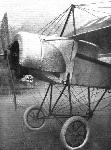 |
Журнал - Flight за 1915 г.
|
| Undercarriage and engine housing of the Fokker monoplane.
|
 |
J.Herris - Fokker Aircraft of WWI. Vol.1: Spinne - M.10 & Watercraft /Centennial Perspective/ (51)
|
The same captured A.I (105/14?) seen at Whitehall, much the worse for wear. This photo was taken in the USA. (Peter M. Grosz collection/STDB)
|
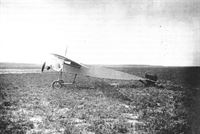 |
J.Herris - Fokker Aircraft of WWI. Vol.1: Spinne - M.10 & Watercraft /Centennial Perspective/ (51)
|
| Fokker A.I 20/16 in Dutch hands. (Peter M. Grosz collection/STDB)
|
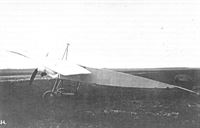 |
J.Herris - Fokker Aircraft of WWI. Vol.1: Spinne - M.10 & Watercraft /Centennial Perspective/ (51)
|
| Fokker A.I A20/16 after internment at Soesterberg airfield in Holland. (F. Gerdessen collection via Peter M. Grosz collection/STDB)
|
 |
J.Herris - Fokker Aircraft of WWI. Vol.1: Spinne - M.10 & Watercraft /Centennial Perspective/ (51)
|
| Fokker A.I 20/16 after internment at Soesterberg airfield in Holland. Holland then bought A20/16 for RM 20.000 on February 22,1917. (F. Gerdessen collection via Peter M. Grosz collection/STDB)
|
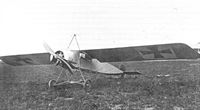 |
J.Herris - Fokker Aircraft of WWI. Vol.1: Spinne - M.10 & Watercraft /Centennial Perspective/ (51)
|
| Fokker A.I A20/16 after internment at Soesterberg airfield in Holland. (F. Gerdessen collection via Peter M. Grosz collection/STDB)
|
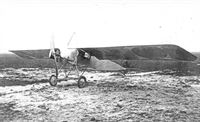 |
J.Herris - Fokker Aircraft of WWI. Vol.1: Spinne - M.10 & Watercraft /Centennial Perspective/ (51)
|
| Fokker A.I LA34 (ex A20/16) in Dutch service, 1916-1917. It crashed and was written off on 24 March 1917 when the pilot ft. J.C.G. Duinker took off with a tail wind. (F. Gerdessen collection via Peter M. Grosz collection/ STDB)
|
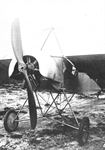 |
J.Herris - Fokker Aircraft of WWI. Vol.1: Spinne - M.10 & Watercraft /Centennial Perspective/ (51)
|
| Close-up of Fokker A.I LA34. (F. Gerdessen collection via Peter M. Grosz collection/STDB)
|
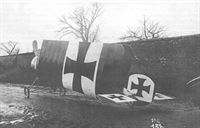 |
J.Herris - Fokker Aircraft of WWI. Vol.1: Spinne - M.10 & Watercraft /Centennial Perspective/ (51)
|
| A pristine Fokker A.I 20/14 w/n 97 behind a car for delivery. The dark finish is interesting. National insignia on the elevators were rare on Fokkers, but most of the 91-105/14 batch of A.Is had some form of the national insignia painted on their elevators. (Peter M. Grosz collection/STDB)
|
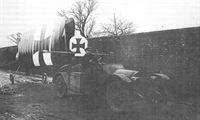 |
J.Herris - Fokker Aircraft of WWI. Vol.1: Spinne - M.10 & Watercraft /Centennial Perspective/ (51)
|
| Fokker A.I 20/16 w/n 97 behind a car for delivery. As seen here, Fokker M8 w/n 97 would have been part of the 91-105/14 production batch of Fok A.Is, so would originally have had a serial from within those numbers. Apparently it was returned to Schwerin for repair and retained at the factory, becoming S20 in the Fokker school inventory. In early 1916, it was re-christened Fok. A.I 20/16 when those school machines were sold back to the army. So, most precisely the aircraft is w/n 97, which did not change. The car is likely taking the airplane to the nearby train station for loading. (Peter M. Grosz collection/STDB)
|
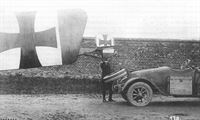 |
J.Herris - Fokker Aircraft of WWI. Vol.1: Spinne - M.10 & Watercraft /Centennial Perspective/ (51)
|
|
|
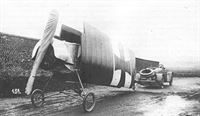 |
J.Herris - Fokker Aircraft of WWI. Vol.1: Spinne - M.10 & Watercraft /Centennial Perspective/ (51)
|
| A pristine Fokker A.I 20/14 w/n 97 behind a car for delivery. The dark finish is interesting. National insignia on the elevators were rare on Fokkers, but most of the 91-105/14 batch of A.Is had some form of the national insignia painted on their elevators. (Peter M. Grosz collection/STDB)
|
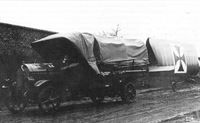 |
J.Herris - Fokker Aircraft of WWI. Vol.1: Spinne - M.10 & Watercraft /Centennial Perspective/ (51)
|
| Fokker A.I being towed behind a truck at Schwerin. (Peter M. Grosz collection/STDB)
|
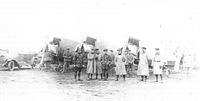 |
J.Herris - Fokker Aircraft of WWI. Vol.1: Spinne - M.10 & Watercraft /Centennial Perspective/ (51)
|
| Fokker A.I aircraft of a FliegerAbteilung packed and on their way to the front. (Peter M. Grosz collection/STDB)
|
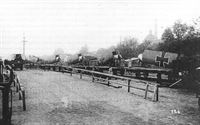 |
J.Herris - Fokker Aircraft of WWI. Vol.1: Spinne - M.10 & Watercraft /Centennial Perspective/ (51)
|
| Fokker A.I aircraft lined up in front of the Fokker factory at Schwerin. (Peter M. Grosz collection/STDB)
|
 |
J.Herris - Fokker Aircraft of WWI. Vol.1: Spinne - M.10 & Watercraft /Centennial Perspective/ (51)
|
| Line-up of Fokker aircraft awaiting collection at Schwerin; from left, an A.II (M.5L) with two A.I (M.8) aircraft to the right. The A.I at right has an 'S' on its rudder instead of the national insignia, indicating it is a school aircraft, together with the number '1' on its fuselage. (Peter M. Grosz collection/STDB)
|
 |
J.Herris - Fokker Aircraft of WWI. Vol.1: Spinne - M.10 & Watercraft /Centennial Perspective/ (51)
|
A BATCH OF HOSTILE FLYERS. - Although the German Army is chiefly using machines of the biplane type, the monoplane has not been altogether banned, as will be seen from the accompanying photograph showing a batch of 15 Fokker monoplanes ready for their acceptance tests. That they are intended for military purposes is evident from the fact that they are all marked with the black cross on wings and rudder.
Line-up of Fokker aircraft outside the Fokker flying school at the Schwerin-Gorries airfield. First in line is an A.II (M.5L) with full national insignia, second in line is an A.I (M.8). (Peter M. Grosz collection/STDB)
|
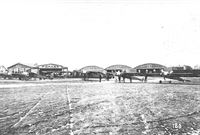 |
J.Herris - Fokker Aircraft of WWI. Vol.1: Spinne - M.10 & Watercraft /Centennial Perspective/ (51)
|
| Fokker A.I aircraft lined up in front of the Fokker factory at the Schwerin-Gorries airfield. The aircraft at right is A.II 281/14. (Peter M. Grosz collection/STDB)
|
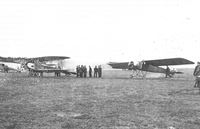 |
J.Herris - Fokker Aircraft of WWI. Vol.1: Spinne - M.10 & Watercraft /Centennial Perspective/ (51)
|
| Fokker A.I with engine running and DFW B.I in the field. (Peter M. Grosz collection/STDB)
|
 |
J.Herris - Fokker Aircraft of WWI. Vol.1: Spinne - M.10 & Watercraft /Centennial Perspective/ (51)
|
| Only the aircraft at left in an A.II (M.5L). Visible behind it are at least two A.I (M.8) aircraft. The center Eindecker appears to be an E.I and the Fokker at right is an E.III, identifiable by the compass in the starboard wing root. The Eindecker at right in back could be a very early E.I due to the high position of the wings. (Peter M. Grosz collection/STDB)
|
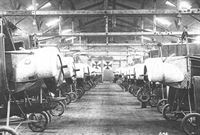 |
J.Herris - Fokker Aircraft of WWI. Vol.1: Spinne - M.10 & Watercraft /Centennial Perspective/ (51)
|
| This appears to be the full complement of Fokker A.Is in use at the Schwerin school. Some may be new, but many refurbished airframes are included that had been returned to the factory for repair. There appear to be 7 with the third-wheel added to their undercarriage. (Peter M. Grosz collection/STDB)
|
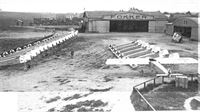 |
J.Herris, J.Scott - Fokker Aircraft of WWI. Vol.2: Eindeckers /Centennial Perspective/ (52)
|
| In this photo of the grounds at the Schwerin-Gorries airfield, twenty-three E.IIIs from the 330-389/16 production batch can be seen (along with three E.IVs) waiting for engines and wings. Fok. E.III 368/16 heads the line at left, while 366/16 is third in line on the right side. It is interesting that none of these seemingly complete airframes have had the national insignia applied to their fuselages. The difference in size between the "flying" wheels on 368/16 and the "road" wheels on most of the others is very apparent. Fok A.I 5/16 is in the foreground. (Peter M. Grosz collection/STDB)
|
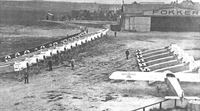 |
J.Herris - Fokker Aircraft of WWI. Vol.1: Spinne - M.10 & Watercraft /Centennial Perspective/ (51)
|
|
|
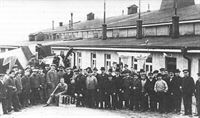 |
J.Herris - Fokker Aircraft of WWI. Vol.1: Spinne - M.10 & Watercraft /Centennial Perspective/ (51)
|
| Factory personnel celebrate delivery of the 100th Fokker built. (Peter M. Grosz collection/STDB)
|
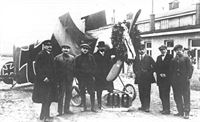 |
J.Herris - Fokker Aircraft of WWI. Vol.1: Spinne - M.10 & Watercraft /Centennial Perspective/ (51)
|
| Celebration of the 100th Fokker built. (Peter M. Grosz collection/STDB)
|
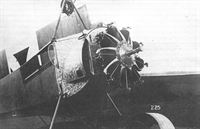 |
J.Herris - Fokker Aircraft of WWI. Vol.1: Spinne - M.10 & Watercraft /Centennial Perspective/ (51)
|
| Fokker M.8 (A.I) packed and ready to ship to the front. A Le Rhone engine is mounted instead of an Oberursel U.0. (Peter M. Grosz collection/STDB)
|
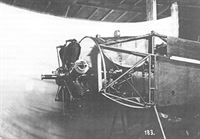 |
J.Herris - Fokker Aircraft of WWI. Vol.1: Spinne - M.10 & Watercraft /Centennial Perspective/ (51)
|
| Fokker A.I work number 148 structure photographed in the factory. (Peter M. Grosz collection/STDB)
|
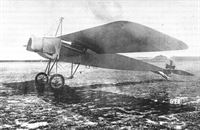 |
J.Herris - Fokker Aircraft of WWI. Vol.1: Spinne - M.10 & Watercraft /Centennial Perspective/ (51)
|
| Fokker A.I w/n 97 (thus A20/16 & LA34) with engine removed for maintenance. (Peter M. Grosz collection/STDB)
|
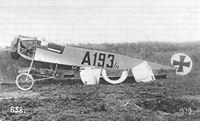 |
J.Herris - Fokker Aircraft of WWI. Vol.1: Spinne - M.10 & Watercraft /Centennial Perspective/ (51)
|
| Fokker A.I A193/14 partially assembled. The extra large armeenummer and 1916-style rudder cross suggest this photo was taken when the aircraft was starting its second career as a trainer. (Peter M. Grosz collection/STDB)
|
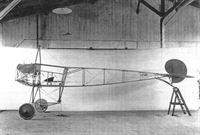 |
J.Herris - Fokker Aircraft of WWI. Vol.1: Spinne - M.10 & Watercraft /Centennial Perspective/ (51)
|
| A bare Fokker M.8 airframe showing its simplicity. Note the pilot's controls and bucket seat in front and the plywood plank for the observer in back. (Peter M. Grosz collection/STDB)
|
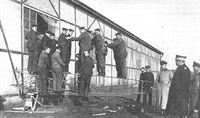 |
J.Herris - Fokker Aircraft of WWI. Vol.1: Spinne - M.10 & Watercraft /Centennial Perspective/ (51)
|
| Servicemen testing the strength of a Fokker A.I fuselage. (Peter M. Grosz collection/STDB)
|
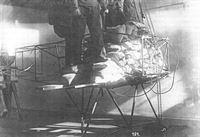 |
J.Herris - Fokker Aircraft of WWI. Vol.1: Spinne - M.10 & Watercraft /Centennial Perspective/ (51)
|
| Fokker A.I fuselage structure undergoing static load testing in the factory. (Peter M. Grosz collection/STDB)
|
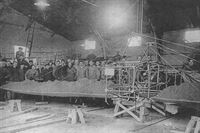 |
J.Herris - Fokker Aircraft of WWI. Vol.1: Spinne - M.10 & Watercraft /Centennial Perspective/ (51)
|
| Fokker A.I undergoing static load testing in the factory. (Peter M. Grosz collection/STDB)
|
 |
Журнал - Flight за 1915 г.
|
| The control lever of the Fokker monoplane.
|
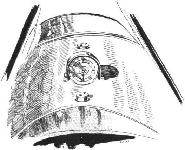 |
Журнал - Flight за 1915 г.
|
| The petrol "clock" on the Fokker monoplane.
|
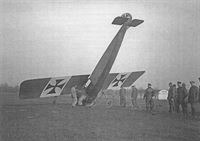 |
J.Herris - Fokker Aircraft of WWI. Vol.1: Spinne - M.10 & Watercraft /Centennial Perspective/ (51)
|
| Halberstadt A.II (license-built Fokker A.I). The give-away is the recessed footstep in the fuselage. All Fokker-built A.Is had stirrups which hung below the bottom longerons. The octagonal rudder cross-field is also seen on many Halberstadts. (Peter M. Grosz collection/STDB)
|
 |
J.Herris, J.Scott - Fokker Aircraft of WWI. Vol.2: Eindeckers /Centennial Perspective/ (52)
|
| In a letter home, Max Immelmann related that Fokker had left eine Ubungsmaschine at Douai, in which Oswald Boelcke had taken him up for his first Fokker lesson on July 30th. This unarmed 2-seat Fokker A.I is very probably that machine, after a later misfortune at the Douai airfield. (Oliver Wulff)
|
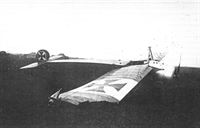 |
J.Herris - Fokker Aircraft of WWI. Vol.1: Spinne - M.10 & Watercraft /Centennial Perspective/ (51)
|
| Fokker A.I after a rough landing. The octagonal white background to the rudder insignia indicates it was built by Halberstadt (that is, it is a Halberstadt A.II). (Peter M. Grosz collection/STDB)
|
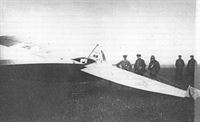 |
J.Herris - Fokker Aircraft of WWI. Vol.1: Spinne - M.10 & Watercraft /Centennial Perspective/ (51)
|
| This is a Halberstadt A.II. It is an alternate view of the crash. (Peter M. Grosz collection/STDB)
|
 |
J.Herris - Fokker Aircraft of WWI. Vol.1: Spinne - M.10 & Watercraft /Centennial Perspective/ (51)
|
| Fokker A.I A.214/14 has come to grief. (Peter M. Grosz collection/STDB)
|
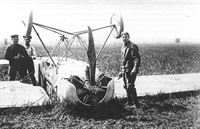 |
J.Herris - Fokker Aircraft of WWI. Vol.1: Spinne - M.10 & Watercraft /Centennial Perspective/ (51)
|
| Fokker A.I upside down; it may be A.214/14. (Peter M. Grosz collection/STDB)
|
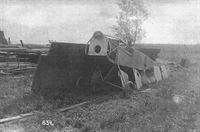 |
J.Herris - Fokker Aircraft of WWI. Vol.1: Spinne - M.10 & Watercraft /Centennial Perspective/ (51)
|
| Disassembled Fokker A.I '4'. (Peter M. Grosz collection/STDB)
|
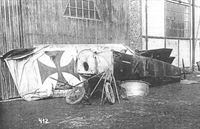 |
J.Herris - Fokker Aircraft of WWI. Vol.1: Spinne - M.10 & Watercraft /Centennial Perspective/ (51)
|
| Damaged Fokker A.I 'S4' at the Fokker factory waiting for repair. (Peter M. Grosz collection/STDB)
|
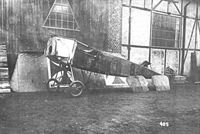 |
J.Herris - Fokker Aircraft of WWI. Vol.1: Spinne - M.10 & Watercraft /Centennial Perspective/ (51)
|
| More damaged Fokker A.I aircraft stored outside the Fokker factory while waiting for repair. A.I 'S8'. It have an 'S' on its rudder indicating school aircraft. (Peter M. Grosz collection/STDB)
|
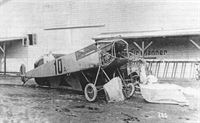 |
J.Herris - Fokker Aircraft of WWI. Vol.1: Spinne - M.10 & Watercraft /Centennial Perspective/ (51)
|
| More damaged Fokker A.I aircraft stored outside the Fokker factory while waiting for repair. A.I 'S10A'. It have an 'S' on its rudder indicating school aircraft. S10 was ex-202/14, w/n 158, eventually repaired and sent to Bulgaria as A.110/16. (Peter M. Grosz collection/STDB)
|
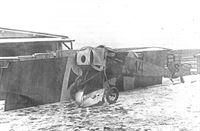 |
J.Herris - Fokker Aircraft of WWI. Vol.1: Spinne - M.10 & Watercraft /Centennial Perspective/ (51)
|
| Damaged Fokker A.I S.14 trainer with nose wheel. (Peter M. Grosz collection/STDB)
|
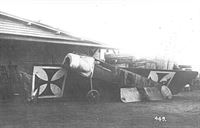 |
J.Herris - Fokker Aircraft of WWI. Vol.1: Spinne - M.10 & Watercraft /Centennial Perspective/ (51)
|
| More damaged Fokker A.I aircraft stored outside the Fokker factory while waiting for repair. A.I A5 (Peter M. Grosz collection/STDB)
|
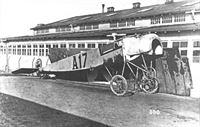 |
J.Herris - Fokker Aircraft of WWI. Vol.1: Spinne - M.10 & Watercraft /Centennial Perspective/ (51)
|
| Damaged Fokker A.I aircraft S.17 trainer.The nosewheel was uncommon. (Peter M. Grosz collection/STDB)
|
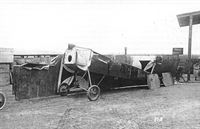 |
J.Herris - Fokker Aircraft of WWI. Vol.1: Spinne - M.10 & Watercraft /Centennial Perspective/ (51)
|
| More damaged Fokker A.I aircraft stored outside the Fokker factory while waiting for repair. A.96/14, from the first production batch, had a single elevator horn. (Peter M. Grosz collection/STDB)
|
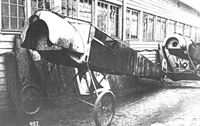 |
J.Herris - Fokker Aircraft of WWI. Vol.1: Spinne - M.10 & Watercraft /Centennial Perspective/ (51)
|
| Fokker A.I 100/14 waiting for repair at the factory. (Peter M. Grosz collection/STDB)
|
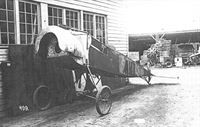 |
J.Herris - Fokker Aircraft of WWI. Vol.1: Spinne - M.10 & Watercraft /Centennial Perspective/ (51)
|
| Damaged Fokker A.I A103/14 from the first production batch stored outside the Fokker factory while waiting for repair. (Peter M. Grosz collection/STDB)
|
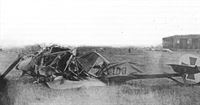 |
J.Herris - Fokker Aircraft of WWI. Vol.1: Spinne - M.10 & Watercraft /Centennial Perspective/ (51)
|
| Apparently A.I 103/14 received updated national markings after its previous repair. It also gained a port elevator horn. This was the fatal crash of an Uffz. Schafer on 14 Oct 1916. (Peter M. Grosz collection/STDB)
|
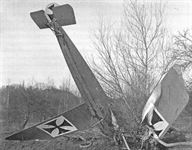 |
J.Herris - Fokker Aircraft of WWI. Vol.1: Spinne - M.10 & Watercraft /Centennial Perspective/ (51)
|
| Crashed Fokker A.I A190/14 Ulrich with pilot. Work Number 115 was stenciled by the undercarriage strut and the name was painted in white in small letters.The upper and side surfaces of 190/14 were painted a color thought to be Feldgrau (Field Gray), and as all stencils are visible it was surely done at the factory. The insignia are painted over white backgrounds. Although from the second production batch it had only a single elevator control horn. (Aviation Heritage Trust)
|
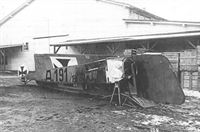 |
J.Herris - Fokker Aircraft of WWI. Vol.1: Spinne - M.10 & Watercraft /Centennial Perspective/ (51)
|
| More damaged Fokker A.I aircraft stored outside the Fokker factory while waiting for repair. A.191/14 (Peter M. Grosz collection/STDB)
|
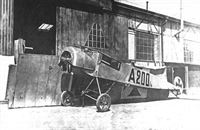 |
J.Herris - Fokker Aircraft of WWI. Vol.1: Spinne - M.10 & Watercraft /Centennial Perspective/ (51)
|
| Fokker A.I A200/14 outside the Fokker factory waiting for repair. (Peter M. Grosz collection/STDB)
|
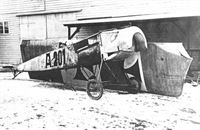 |
J.Herris - Fokker Aircraft of WWI. Vol.1: Spinne - M.10 & Watercraft /Centennial Perspective/ (51)
|
| Damaged Fokker A.I aircraft A.201/14 stored outside the Fokker factory while waiting for repair. (Peter M. Grosz collection/STDB)
|
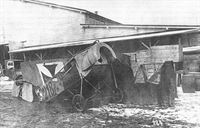 |
J.Herris - Fokker Aircraft of WWI. Vol.1: Spinne - M.10 & Watercraft /Centennial Perspective/ (51)
|
| The wreck of Fokker A.I A218/14 from the 181-224/14 batch. The sliding window shutter is still present, although broken, and the side windshield has also broken off. (Peter M. Grosz collection/STDB)
|
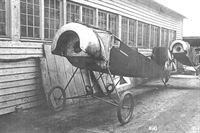 |
J.Herris - Fokker Aircraft of WWI. Vol.1: Spinne - M.10 & Watercraft /Centennial Perspective/ (51)
|
| Fokker A.I 20/16 w/n 97 waiting for repair at the factory. This aircraft was interned in Holland on 8 September 1916. (Peter M. Grosz collection/STDB)
|
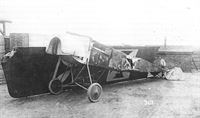 |
J.Herris - Fokker Aircraft of WWI. Vol.1: Spinne - M.10 & Watercraft /Centennial Perspective/ (51)
|
| Unidentified Fokker A.I waiting for repair. (Peter M. Grosz collection/STDB)
|
 |
J.Herris - Fokker Aircraft of WWI. Vol.1: Spinne - M.10 & Watercraft /Centennial Perspective/ (51)
|
| Fokker A.I (M.8) wreckage. (Peter M. Grosz collection/STDB)
|
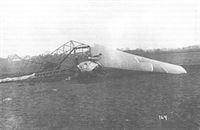 |
J.Herris - Fokker Aircraft of WWI. Vol.1: Spinne - M.10 & Watercraft /Centennial Perspective/ (51)
|
| A Fokker A.I destroyed by a crash and fire. Crewmen Lietz and Regius were killed. (Peter M. Grosz collection/STDB)
|
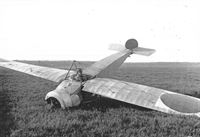 |
J.Herris - Fokker Aircraft of WWI. Vol.1: Spinne - M.10 & Watercraft /Centennial Perspective/ (51)
|
| Fokker A.I LA34 (ex A20/16) in Dutch service, 1916-1917. It crashed and was written off on 24 March 1917 when the pilot ft. J.C.G. Duinker (in cockpit) took off with a tail wind. (F. Gerdessen collection via Peter M. Grosz collection/ STDB)
|
 |
J.Herris - Fokker Aircraft of WWI. Vol.1: Spinne - M.10 & Watercraft /Centennial Perspective/ (51)
|
|
|
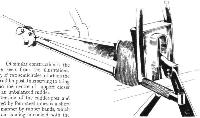 |
Журнал - Flight за 1915 г.
|
| Detail of shock-absorbing arrangement and step bracket on the Fokker monoplane.
|
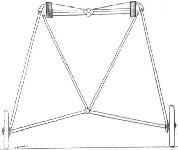 |
Журнал - Flight за 1915 г.
|
| Diagrammatic sketch of chassis.
|
 |
Журнал - Flight за 1915 г.
|
| Attachment of lift cables to chassis on the Fokker monoplane.
|
 |
Журнал - Flight за 1915 г.
|
| The Fokker monoplane with wings folded for transport.
|
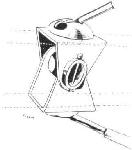 |
Журнал - Flight за 1915 г.
|
| Attachment of lift cables to main spars on the Fokker monoplane.
|
 |
J.Herris - Fokker Aircraft of WWI. Vol.1: Spinne - M.10 & Watercraft /Centennial Perspective/ (51)
|
| Fokker M.6
|
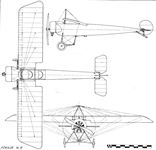 |
A.Weyl - Fokker: The Creative Years /Putnam/
|
| Fokker M.6
|
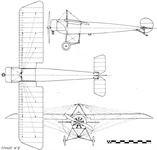 |
A.Weyl - Fokker: The Creative Years /Putnam/
|
| Fokker M.8
|
 |
J.Herris - Fokker Aircraft of WWI. Vol.1: Spinne - M.10 & Watercraft /Centennial Perspective/ (51)
|
| Fokker M.8 (A.I)
|
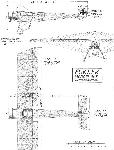 |
Журнал - Flight за 1915 г.
|
| THE FOKKER MONOPLANE. - Plan, front and side elevations to scale.
|
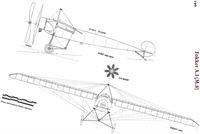 |
J.Herris - Fokker Aircraft of WWI. Vol.1: Spinne - M.10 & Watercraft /Centennial Perspective/ (51)
|
| Fokker A.I (M.8)
|
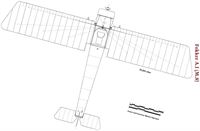 |
J.Herris - Fokker Aircraft of WWI. Vol.1: Spinne - M.10 & Watercraft /Centennial Perspective/ (51)
|
| Fokker A.I (M.8)
|
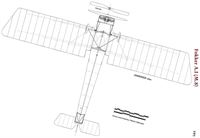 |
J.Herris - Fokker Aircraft of WWI. Vol.1: Spinne - M.10 & Watercraft /Centennial Perspective/ (51)
|
| Fokker A.I (M.8)
|

